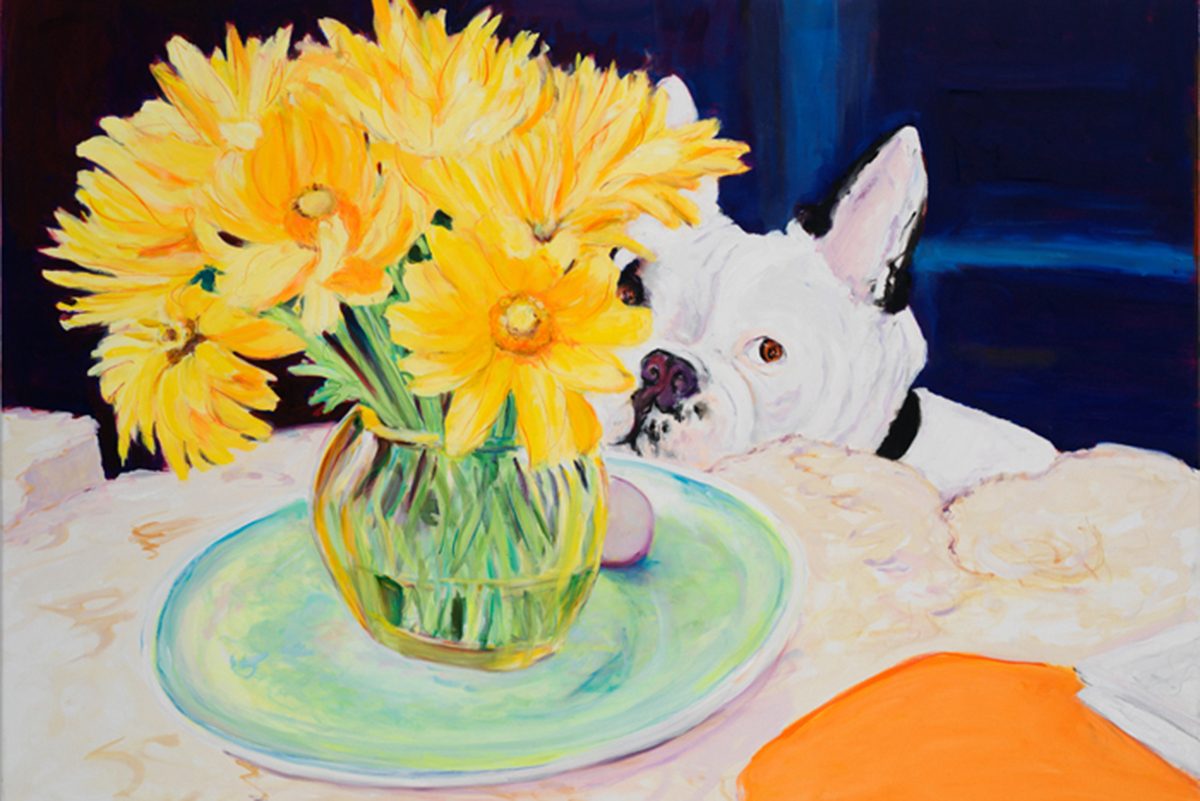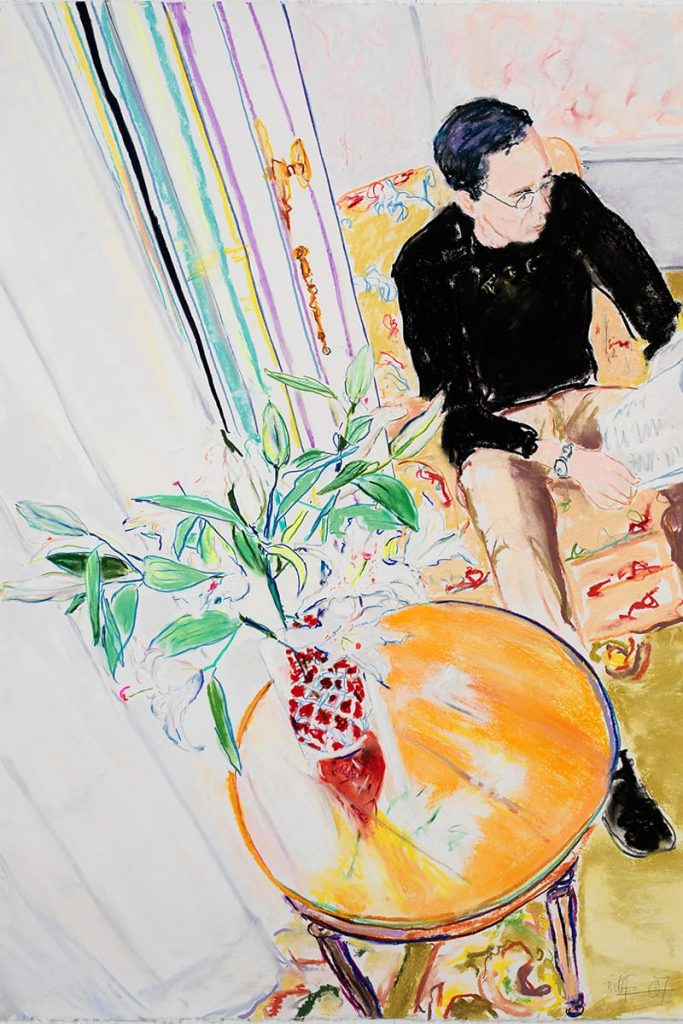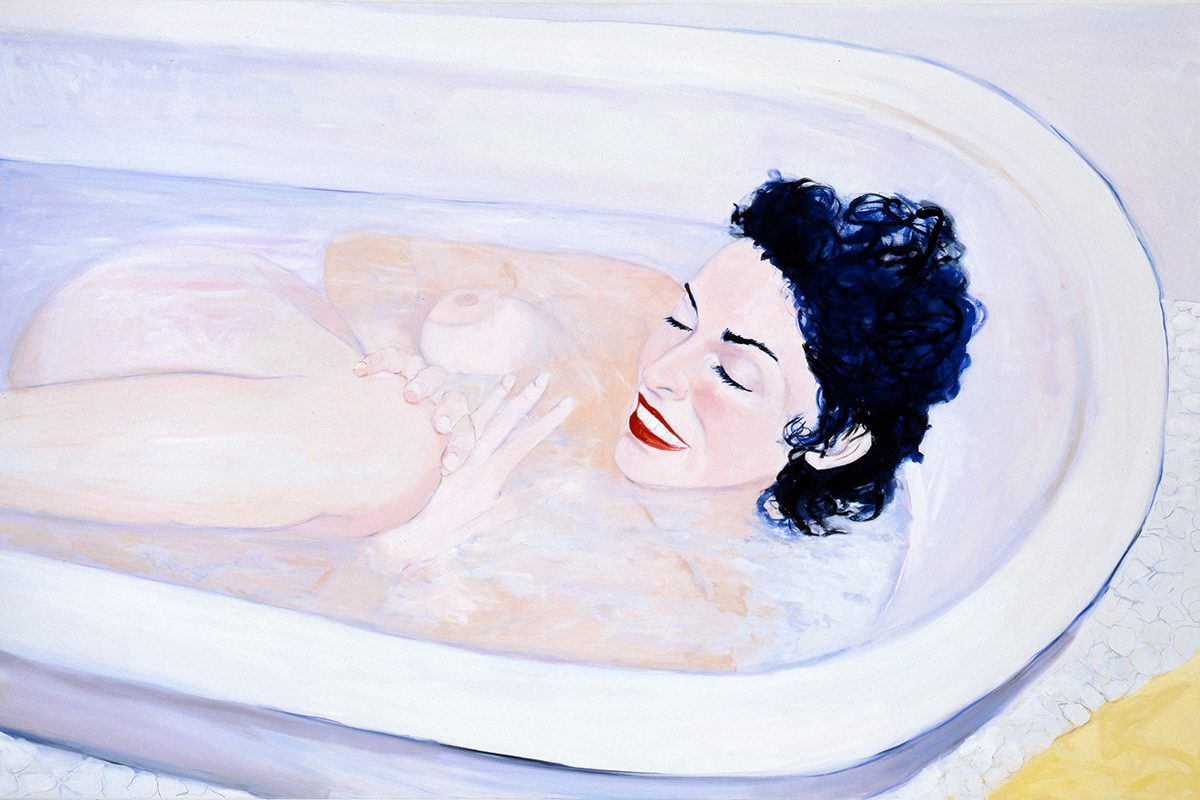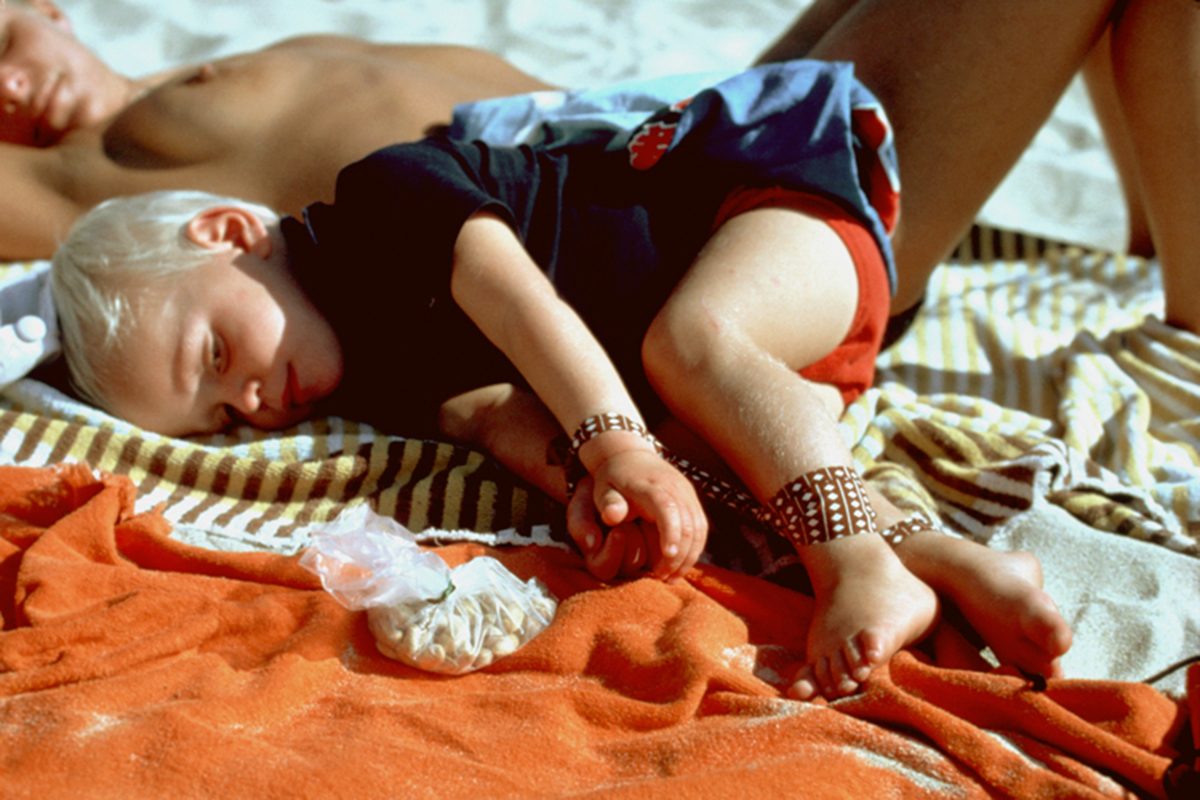
- This event has passed.
For Billy Sullivan still life and portraiture oscillate on the same pictorial plane, offering clues to a specific person, place or time. In all but one of these new paintings and pastel drawings presented at francesca kaufmann, a protagonist shares space with still life objects, revealing a captured glimpse into quotidian, private lives.
Whether still life or portrait, Sullivan’s canvasses are animated through lush color combinations and energetic strokes that linger on purely visual pleasures – flowers, furniture, dishes, and ornamental patterns. These aesthetically appetizing objects serve as kind of screen, filtering the viewer’s gaze into the private, temporal realm of the sitter. The very presence of the still life becomes a measure of the passage of time. In Sybilla (2007) the vase of flowers in the foreground frames the scene in the background: Sybilla in a solitary moment, completely unaware and unaffected by the viewers gaze.
The psychological precision of Sullivan’s portraits is engendered in part through the sliding between viewer and voyeur, the boundary between the two almost always invisible: Carol, 250 Bowery (2007) is an intimate portrait of a woman bathing. Her smile and down-turned gaze suggests a private moment into which the viewer unknowingly stumbles. This exclusive moment unfolds as a kind of candid instant in time.
The transitory nature of Sullivan’s pictorial scenes allude to a photographic source. For Sullivan, photography has a central role as the formal armature for paintings and drawings, but also as a self-sufficient art object. In this show, Sullivan’s photography is represented by one cibachrome, and by a new DVD slideshow of eighty-one photographic diptychs.
The photograph, Amy & Sam, Summer 1976, further elaborates on the hide-and-seek game of still-life-portraiture. In this picture, Sullivan’s younger son Sam (two years old at the time) lays on his side next to his mother at the beach. A mischievous relationship develops between Sam’s loosely bound hands and feet, the bag of pistachios he eyes hungrily, the brilliant deep orange beach towel, and his mother’s exposed breast.
In a similar way, each picture in the slideshow Night and Day 1971-2007 captures a theater of manners and gestures. Viewed as a whole, this digital slideshow offers a vivid, flashing, first person account of thirty six years of parties and celebrations. Formal relationships are immediately sparked not just between each half of the diptych, but also across time as afterimages in the mind. Night and Day 1971-2007 was premiered this past summer at Sullivan’s first museum survey, at Guild Hall of East Hampton, New York.
Per Billy Sullivan il ritratto e la natura morta sono situati sullo stesso piano pittorico, entrambi capaci di svelare la chiave di lettura di una persona, un luogo o un tempo. In quasi tutti i nuovi dipinti e disegni a pastello presentati da francesca kaufmann il protagonista divide la scena con gli elementi di una natura morta: ogni opera mostra un momento rubato a mondi quotidiani e privati.
Le tele di Billy Sullivan sono animate da lussureggianti combinazioni cromatiche e pennellate energetiche che indugiano su scenari di puro piacere visivo – fiori, mobili, piatti e motivi ornamentali. Questi oggetti dall’aspetto allettante funzionano come sorta di schermo che introduce lo sguardo dello spettatore nel regno privato del soggetto. La presenza stessa delle nature morte diventa la misura del passare del tempo. In Sybilla (2007) il vaso di fiori in primo piano incornicia la scena sullo sfondo: Sybilla in un momento solitario, altera e indifferente allo sguardo dello spettatore.
La precisione psicologica dei ritratti di Billy Sullivan è generata in parte dall’avvicinamento dello spettatore al ruolo inconsapevole di voyer: Carol, 250 Bowery (2007) è il ritratto di una donna che fa il bagno. Il suo sorriso e lo sguardo reclinato suggeriscono un momento intimo in cui lo spettatore irrompe, come spiando un istante rubato allo scorrere del tempo.
La natura transitoria delle scene pittoriche di Billy Sullivan allude a un’origine di matrice fotografica. La fotografia copre un ruolo centrale nella lavoro di Billy Sullivan: è matrice diaristica, armatura formale per dipinti e disegni ma anche oggetto artistico autosufficiente. In questa mostra il lavoro fotografico di Sullivan è rappresentato da un cibachrome e da un nuovo slideshow composto da 81 dittici di foto.
La fotografia, Amy & Sam, Summer 1976, rielabora il gioco tra ciò che è evidente e ciò che è nascosto già presente nei dipinti. Su una spiaggia Sam, il figlio minore dell’artista, è steso sul fianco accanto a sua madre. Tra le membra abbandonate di Sam, il sacchetto di pistacchi osservato con desiderio, il telo da spiaggia arancione brillante e il seno scoperto della madre si sviluppa un reticolo di relazioni visive e sensuali.
Allo stesso modo ogni immagine dello slideshow Night and Day 1971-2007 cattura uno scenario di modi e gesti. Visto come insieme il lavoro offre un vivido, sfavillante, personale resoconto di 36 anni di party e eventi mondani (celebrazioni). Con lo scorrere delle immagini si intesse una rete di relazioni non solo tra le due metà del dittico ma anche tra momenti distanti tra loro, come a creare una comunità ideale che trascende le barriere del tempo e dello spazio. Night and Day 1971-2007 è stato esposto in anteprima la scorsa estate in occasione della prima retrospettiva museale dedicata a Billy Sullivan, al Guild Hall, East Hampton, New York.




